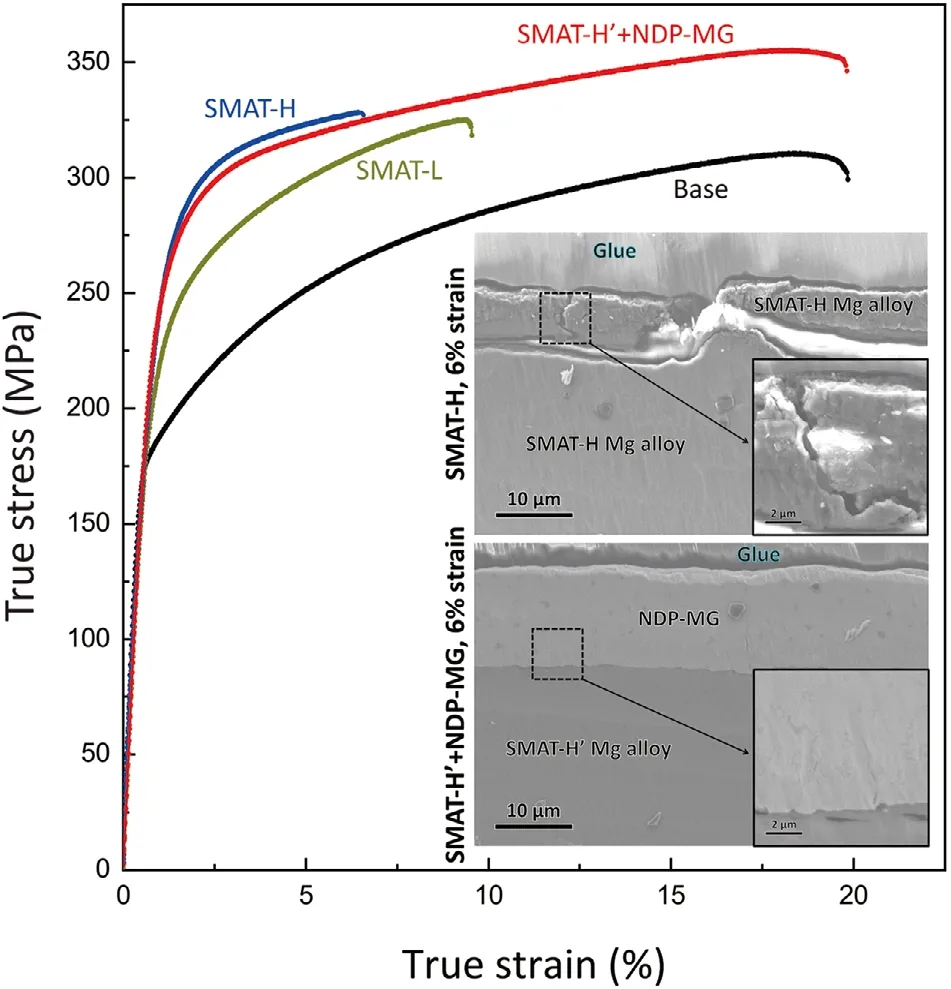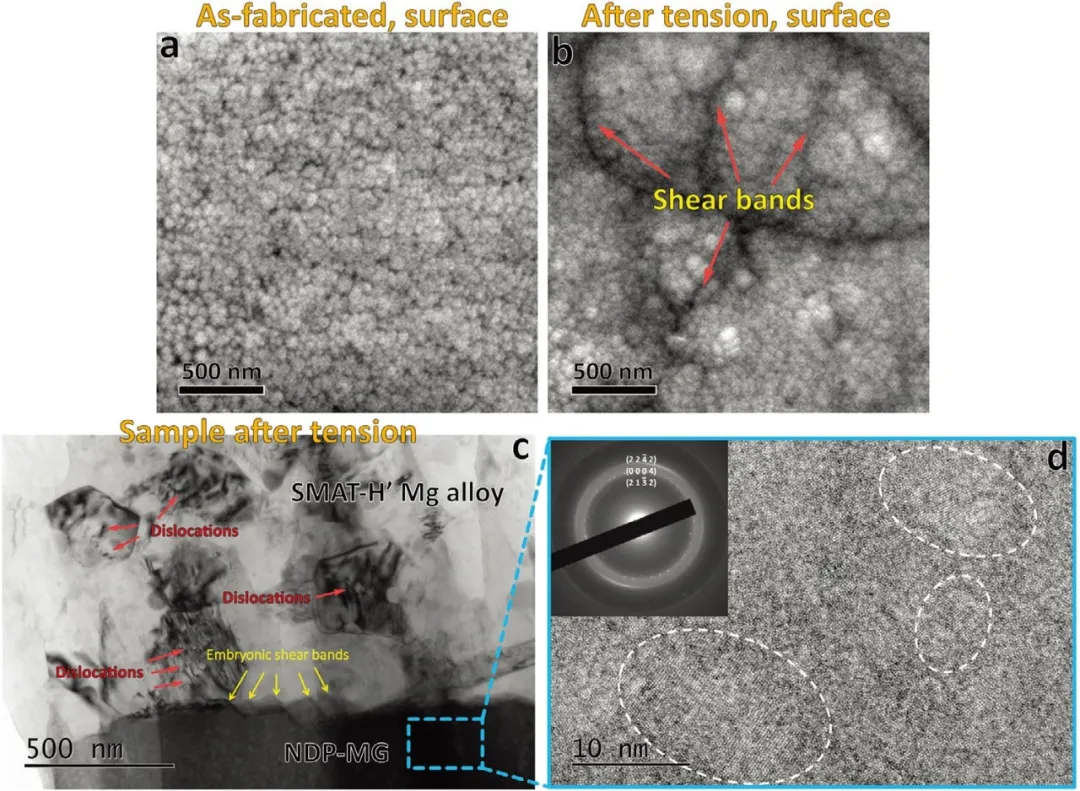However, due to its inherent close-packed hexagonal structure, its ductility is poor, and obtaining magnesium alloys with both high strength and high plasticity has also become an important direction of current research.
Preliminary research results show that the introduction of gradient nanostructures on the surface of magnesium alloys through surface mechanical grinding treatment (SMAT) can significantly improve the microhardness and wear resistance of magnesium alloys, but lead to a significant reduction in its plasticity.

Figure 1. Structure and composition of Mg-Zn-Ca dual phase metallic glass (NDP-MG)
Academician Lv Jian of the Greater Bay Area Research Department of the Shenyang National Research Center for Materials Science, Institute of Metals, and his collaborators have previously found that the super-nano dual-phase magnesium alloys with amorphous encapsulated nanocrystals can achieve near-theoretical strength (Nature 545, 80-83 (2017 )), taking AZ31 alloy as the research object, firstly using SMAT to obtain gradient nanocrystals on the surface of magnesium alloy, and then depositing Mg-based dual-phase metallic glass film (Mg-Zn-Ca) on the surface of the alloy by magnetron sputtering, Innovatively combining nano-dual-phase metallic glass with gradient nano-crystalline structure, a new multi-level structure magnesium alloy is designed.

Figure 2. Structure and mechanical properties of nano-gradient SMAT magnesium alloy
Further research found that the excellent mechanical properties of multi-level nanostructured magnesium alloys include three deformation mechanisms, including: multiple shear bands and nanocrystallization of dual-phase metallic glasses, metallic glasses to block crack extension of nanocrystalline layers, and SMAT nanocrystalline The grains of the layer grow. Similar new nanostructures can yield high-strength and high-plastic copper.

Figure 3. Room temperature mechanical properties of dual-phase metallic glass + SMAT (NDP-MG coated SMAT-H′) magnesium alloy
This alloy structure design concept is expected to realize the combination of high strength and high elongation in other alloy systems, especially the close-packed hexagonal structure alloy, and guide the design of new materials in the future.

Fig. 4. SEM morphologies of NDP-MG before deformation and after 6% stretching
The related results were published in Advanced Science under the title "Nano-dual-phase metallic glass film enhances strength and ductility of a gradient nanograined Magnesium alloy".
Paper link
Disclaimer: The copyright of the text, pictures and video materials reproduced on this website belongs to the original author. If there is any infringement, please contact this website to delete it as soon as possible.
-------------------------------------------------------------END----------------------------------------------------------------------------------------------------------

